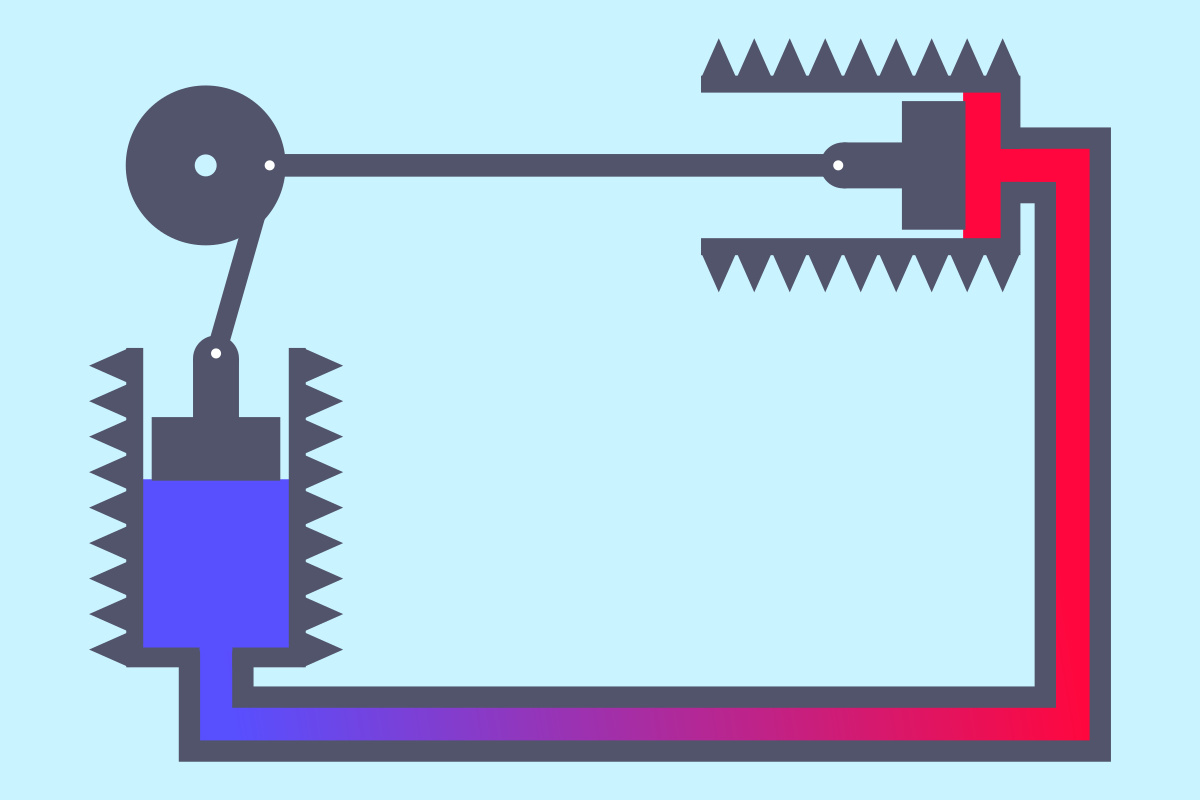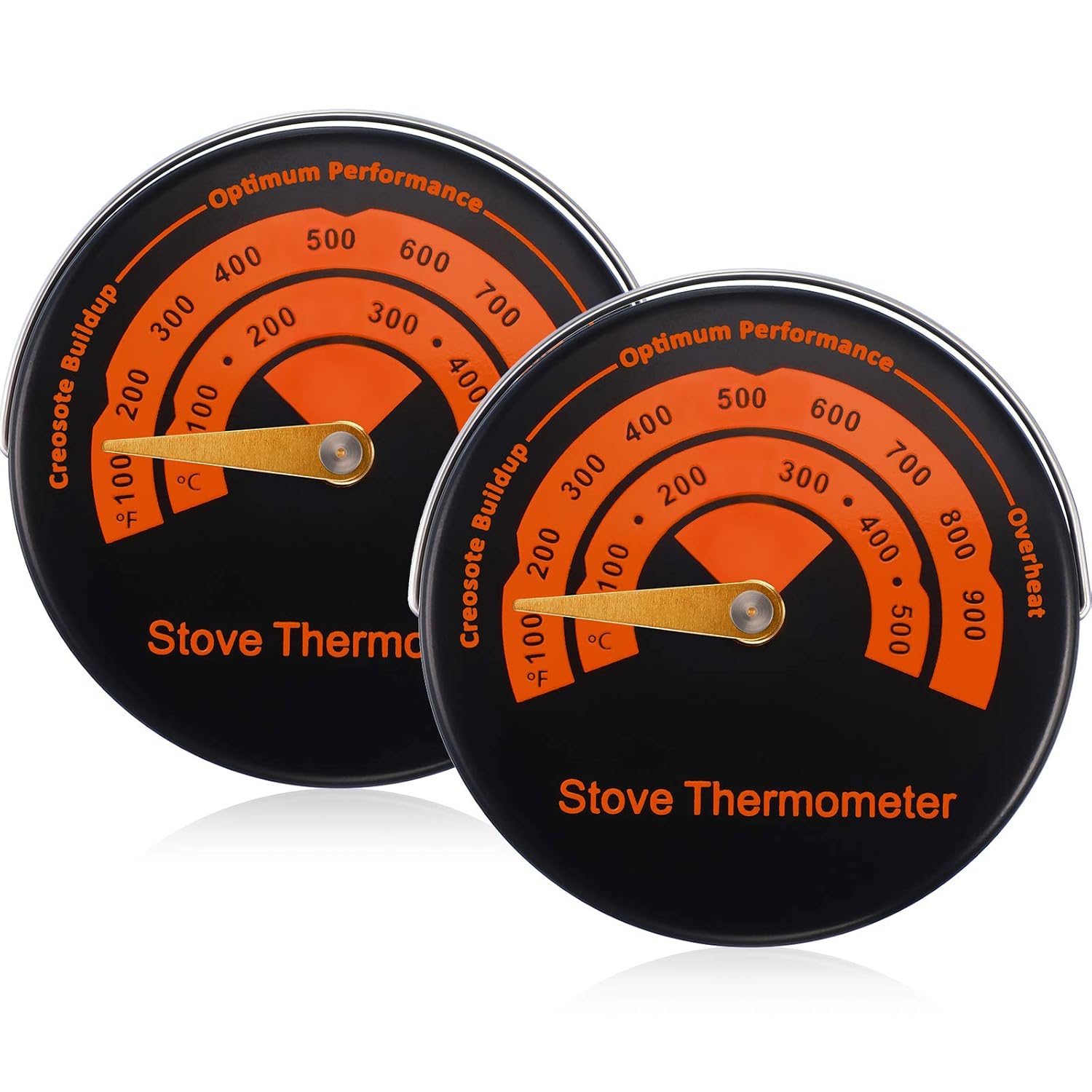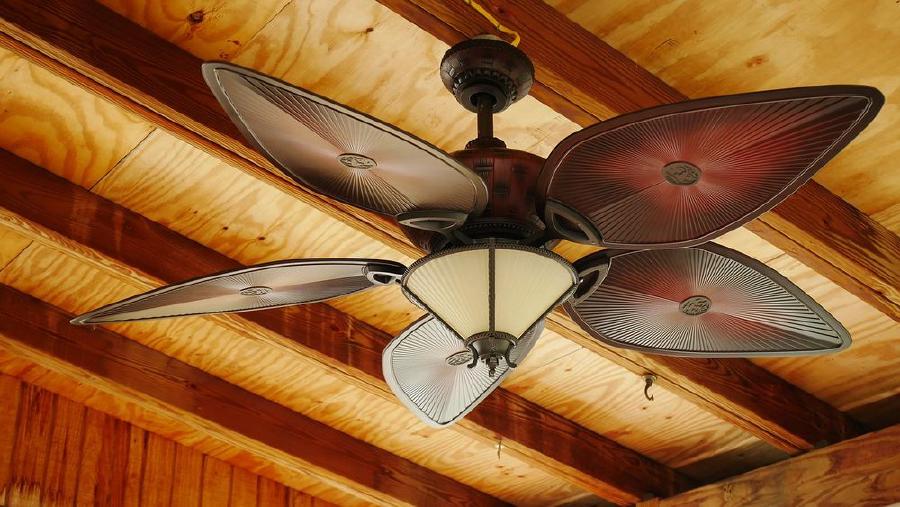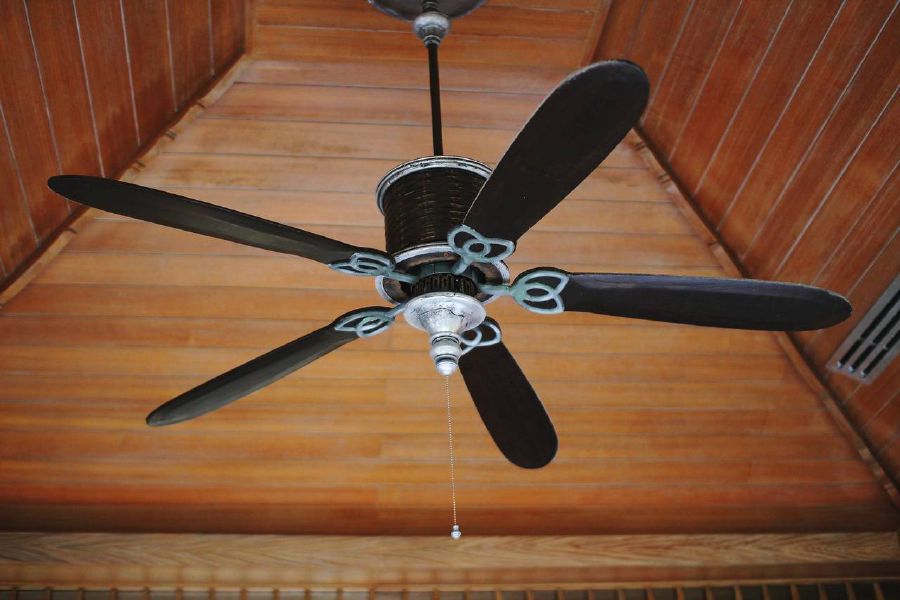Stove fans
Stove fans are practical helpers when heating with your own stove. A stove fan generates an air flow and improves the distribution of warm air in the room. It can therefore be used to more efficient heating become.
In this article, we take a look at the advantages and disadvantages of an oven fan. We also take a look at how they work. For example, an oven fan needs no plug. For this reason, in my opinion, it is one of the most exciting Fans.
I will then present the models that I think are worth recommending in more detail. Click on one of the links in the ranking list to go directly to the rating of the corresponding device:
Recommended oven fans
So that you don't waste time reading here, we'll first clarify when and where a stove fan is actually useful. Then you can decide for yourself whether it's worth using it or not.
When is an oven fan useful?
A stove fan is well suited to - you guessed it - a stove. It doesn't usually go so well with a fireplace. It needs a warm, preferably smooth surface on which it can be placed.
Before you decide on a stove fan, make sure that your stove or fireplace has sufficient space.
Such a fan is useful wherever warm air needs to be evenly distributed in the room.
Even distribution is often a bigger problem with stoves than with heaters. The stove usually gets warmer. It is then very warm around the stove, but the temperature drops very quickly when you move away from the stove. This is partly due to the radiant heat, but also to the warm air around the stove.
The stove fan helps you to distribute the warm air. You can find out more about its exact purpose in the next section. There is also a practical example for better understanding.
What is the purpose of an oven fan?
The purpose of the stove fan is to better distribute the air heated by the stove throughout the room. It allows you to achieve better mixing of the air and heat more efficiently. An example:
Let's assume the stove is on one side of the room and your sofa on the other. To keep the sofa nice and warm, you need to light the stove properly. It will be very warm directly around the stove. However, the further away you are from the stove, the colder it gets.
To ensure that this temperature transition is as flat as possible, you can use the oven fan. It scoops the warm air away from the stove.
The better distribution is also advantageous for heating the air in the stove. It can heat colder air better than air that is already quite warm.
In short: you heat more efficiently with a stove fan.
Advantages and disadvantages
What speaks for or against a stove fan can be summarised quickly:
The most important advantages have already been mentioned in the previous section. The disadvantage of using an oven fan is that it requires a suitable, warm surface on the oven. In addition, the fan generates a slight noise, as all fans do.
How does an oven fan work?
Now it's getting exciting! As I mentioned at the beginning, stove fans are one of the most interesting fans in my eyes. And I see the main reason for this in their special mode of operation.
Unlike other fans, you don't have to plug it into a socket.
If you feel like I did when I heard that for the first time, then you're probably asking yourself the question: "Huh?"
An oven fan is driven by the heat from the oven.
It sounds strange at first, but it works really well. The heat from the oven is a great source of energy, so why not use it?
In shortThe oven fan absorbs the heat energy via the base and finally releases it again via the branched cooling elements. In principle, the thermal energy passing through the appliance fulfils the task that would otherwise be performed by electricity.
Depending on how deep you want to delve into the subject, you can also skip the rest of this text section. For those who want to know more, here are the two most common principles according to which a stove fan works:
Oven fan with Peltier effect
The Peltier effect is also known as the Seeback effect or Thomson effect. [ 1 ]
The Peltier element can generate a current flow from a temperature difference.
This also works the other way round: a Peltier element can also generate a temperature difference from a current flow. Peltier elements are therefore also used, for example, for cooling in Dehumidifiers used.
With the oven fan, the temperature difference is used to generate a current flow. This drives the rotor.
Stove fan with Stirling engine
A Stirling engine works with a closed system in which there is a heat medium (e.g. helium).

There is a chamber with a flask at each end of the system. One chamber is located where it can be heated by an external heat source. In the case of the oven fan, this chamber would be close to the base. The second chamber is used to cool the gas.
The gas is heated in one chamber and cooled in the other. As the gas expands when heated and compresses again when cooled, it oscillates back and forth between the two chambers. The back and forth movement of the gas is then utilised by the pistons, which are both connected to a shaft and cause it to rotate.
Which drive type is better?
In principle, I would tend to favour stove fans with a Peltier element guess. Stirling engines are more susceptible to faults. A Stirling engine is more branched in its design, which also makes cleaning somewhat more difficult.
Purchase criteria
Let's now take a closer look at the individual purchasing criteria for an oven fan. You should pay particular attention to the following points:
- Material & heat resistance
- Overheating protection & thermometer
- Drive type
- Price
This list is pretty straightforward. In fact, in my opinion, these are all the most important criteria I would use to select an oven fan today.
The material and its Resistance to heat is a basic requirement for safe operation. Built-in overheating protection is recommended.

There are also models that with a thermometer are supplied. These thermometers are usually fitted with an easy-to-read scale. It usually also shows the recommended temperature range.
At the Drive type I would go to the Peltier element (also known as the Seeback effect or Thomson effect drive). The Stirling engine is more susceptible to faults and the corresponding devices are more difficult to clean.
Pricing I would use a good oven fan between 20 and 50€ categorise.
Operation
The stove fan is very easy to handle. Place it on a warm and level surface on the stove and make sure it stands securely!
The rotor should start turning at an outside temperature of around 50°C. Align the rotor so that the air flow it generates is directed into the room. This is the best way to distribute the warm air.
Care
Maintenance is also quite simple. Dust should be removed from the appliance from time to time. Before cleaning, make absolutely sure that the appliance and the oven are Completely cooled down and the Rotor no longer turnsbefore you touch the oven fan or wipe it with a dust cloth.
Recommended oven fans
Here is a list of oven fans that I think are worth recommending. I have endeavoured to make the ranking as objective as possible. If you think that a fan is missing from this list or is wrongly listed, please write to me: maxmarx1991@gmail.com
Test winner - Ecofan UltrAir Heat-driven oven fan
Advantages
❌ Disadvantages
We use the stove fan on our wood-burning stove - and every time it is impressive how this small fan works reliably without any electricity. As soon as the stove gets hot, the blades start moving quietly and noticeably distribute the warm air in the room. No cable, no switch - simply powered by the rising heat. The principle seems almost magical.
Initially, we only had one fan in use. The effect was immediately positive: the living area warmed up more quickly and the heat felt more evenly distributed. After a while, we decided to add a second fan - for the opposite side of the stove. This combination works perfectly for us: the warm air is channelled efficiently in both directions and thus also reaches neighbouring rooms.
The Ecofan is a real plus, especially in the cold season, when the wood-burning stove not only provides cosiness but also serves as an alternative heat source. Even if the power fails, the fans simply continue to run - without the need for batteries or a power connection. We also particularly like the fact that the model starts at relatively low temperatures and continues to run for a long time, even when there are only embers left in the stove.
The simple design fits well on the stove, the workmanship looks high-quality and robust. We immediately notice the difference in our hallway: without a fan, it often remains noticeably colder. Only very rarely does one of the fans fail to start immediately, but a slight impulse - such as closing the oven door - is usually enough.
Conclusion: The two Ecofans have been working reliably for us for years - quietly, without electricity and effectively. An inconspicuous but enormously helpful helper in everyday winter life.
3-blade fan
The stove fan impresses with its innovative technology, which does not require any electricity or batteries. It is powered solely by the heat from the fireplace or stove and starts automatically as soon as the Surface temperature 55°C is achieved. This means that it is not only environmentally friendly, but also helps to save energy by efficiently distributing the heat in the room without incurring additional operating costs.
The compact design made of anodised aluminium not only gives the fan a modern look, but also ensures durability and robustness. With a height of just 19 cm, it fits perfectly in tight spaces and on various types of stoves.
Visually, I find it slightly less appealing than first place in this ranking. A thermometer is not included in the scope of delivery. On the other hand, this oven fan is cheaper.
2-blade fan
This stove fan has absolutely convinced me and far exceeded my expectations! The workmanship is extremely high quality and the fan feels robust and well made. What is particularly impressive is how efficiently it distributes the heat in the room. Even in larger rooms, such as my workshop with high ceilings, it manages to distribute the warm air evenly. This ensures a pleasant room climate without the heat only building up near the stove.
I was also surprised by its use in combination with a pellet stove, as many other models are unsuitable for this. This fan works perfectly, which makes it very versatile. Another highlight is that I actually use less fuel thanks to the improved heat distribution, which saves costs in the long term.
All in all, this fan is worth every cent. Not only does it significantly improve the indoor climate, it is also an environmentally friendly and efficient solution. Highly recommended for anyone who wants to make the most of the heat from their stove!
Double fan
This stove fan has two rotors, each with four blades. This makes the design wider and flatter than the other appliances in this list. Depending on how much space is available on the oven, this lower but wider model may be a good choice.
Furthermore, the cooling elements do not run in branches behind the blades, but are built in a circle around them.
A thermometer is included with this model. It is priced higher than the other two models presented here.
Accessories
In my opinion, a thermometer is the most important accessory for an oven fan. I like thermometers that can be attached magnetically to the stove best.
You can use the thermometer to estimate when the fan should start turning after the fire has been lit in the stove (at around 50°C).
Alternatives
The basic idea behind stove fans is to improve the mixing of the air. In this way, the heat from the stove can be better utilised.
The oven fan is placed directly on the oven. For this reason, an oven fan must be heat-resistant.
An alternative for better mixing of the room air would be a ceiling fan, for example.

Ceiling fans are well suited to this task for the following reasons:
- Large wing blades
- Quiet operation
- hardly takes up any space
- Visually appealing
The large blades can still move a lot of air at a relatively low rotor speed. A low speed also causes less noise. For this reason, operating a ceiling fan is pleasant in my opinion. It also requires hardly any space - at least none on which furniture could be placed.
A beautiful ceiling fan enhances the appearance of a room.
Most ceiling fans are equipped with a Winter and summer mode. One helps to cool down in summer, the other supports the stove and heating system in distributing the air in the room. You can find out more about ceiling fans in this article:

Ceiling fans
Recommended ceiling fans: These models are well suited for private households.
Conclusion
Stove fans are a practical and energy-saving way to make heating with a stove more efficient.
They are quiet in operation, do not require a power connection and run automatically when they are needed. If there is space on your stove for an oven fan, then I think it's worth thinking about buying one.
